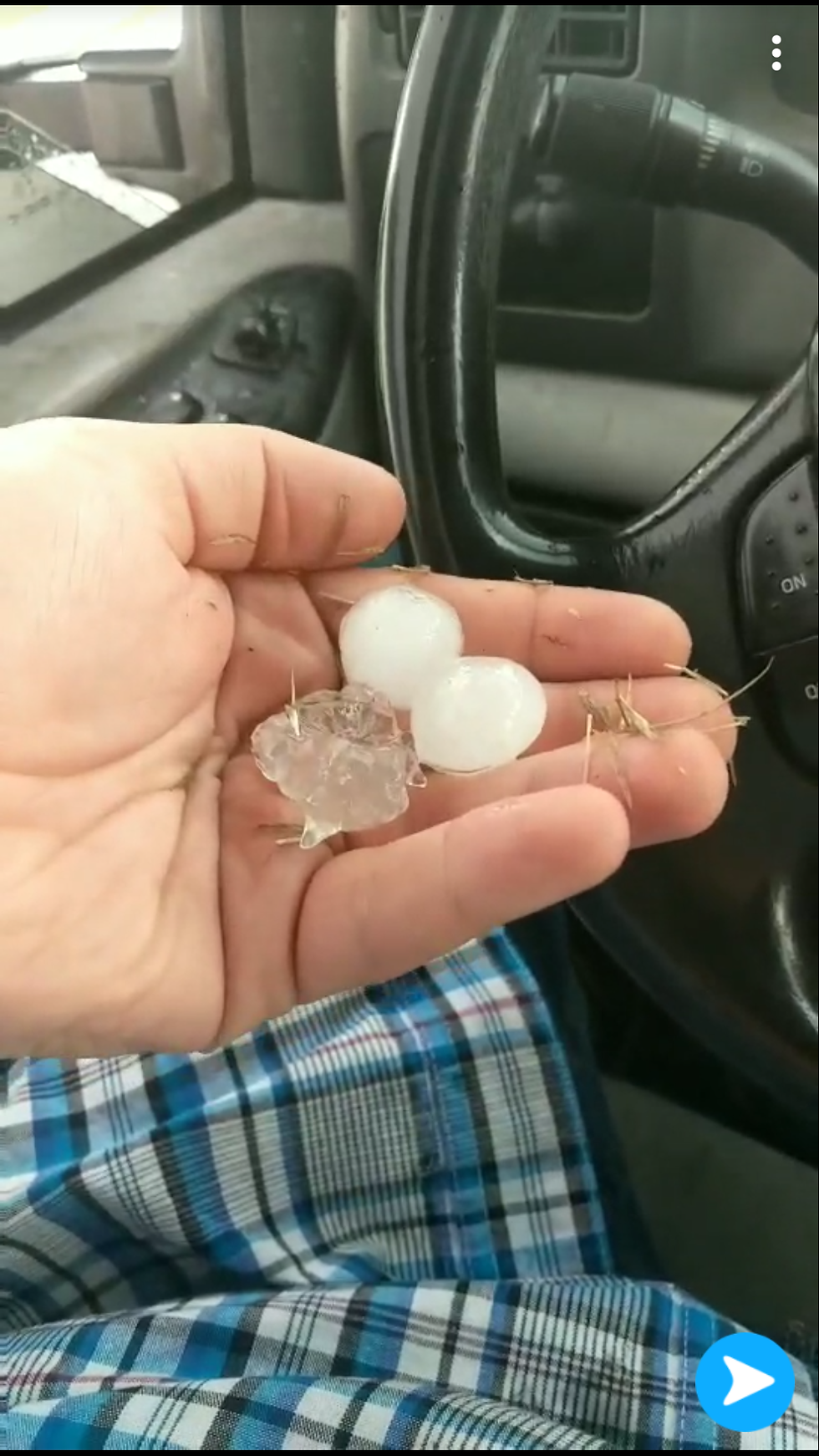What causes hail
- Michael Thornton
- Apr 19, 2020
- 3 min read
Updated: Mar 26, 2022
What are updrafts and downdrafts?

Before we can begin talking about how hail forms, we must first understand what updrafts and downdrafts are. Within every Thunderstorm exists an updraft and downdraft. An updraft is an area of upward-moving air that goes into a Thunderstorm. Meanwhile, a downdraft is an area of downward-moving air that exits the Thunderstorm. When a Thunderstorm is in a very unstable environment and has strong vertical updrafts and downdrafts, these storms can produce large hail.
How does hail form?

Now that we understand what an updraft and downdraft is we can move on to learning about how hail forms. Hail forms when the updraft of a Severe Thunderstorm carries water droplets high up into the Thunderstorm where temperatures are well below freezing. Particles such as water droplets, graupel, and even insects can

become caught in an updraft where they act as embryos that grow by acceleration. There are 3 different ways for hail growth to occur; the dry growth, wet growth, and spongy growth. The dry growth process occurs when all of the supercooled water droplets and parts of ice crystals come into contact with the embryo.

What this means is that when the growing hailstone enters an area where the water content is very low, supercooled droplets will begin to freeze instantly on the stone. Wet growth occurs when supercooled water droplets accumulate rapidly on the growing hailstone to the point where latent heat begins to be released causing the hailstones

surface temperature to remain at the freezing level even though the air around the hailstone is much colder. During the spongy growth process, a hailstone tends to accumulate supercooled water droplets so fast to the point where the hailstone is not able to completely freeze. What this means is that the hailstone will be a mixture of water and ice at the freezing level. Thunderstorms that have strong updrafts tend to release a bunch of hail in a long and narrow band. When a Thunderstorm becomes stationary over an
area hail accumulation can occur, causing the area around it to look like snow has accumulated. In some cases, 12 inches or 30 centimeters of hail can fall in a single area. We call this a hail streak.
Can we suppress hail storms?

For decades people have been trying to think of ways to stop hailstorms from hitting specific areas. The idea behind suppressing hail storms is to try and give the supercooled water droplets more places to accrete. If we allow supercooled water droplets more places to accrete these supercooled water droplets will create more hailstones but at the same time the hailstones will either melt before they reach the ground or not cause as much damage because the hailstones will be much smaller. However, by doing this, we often see an increase in rainfall amounts. Humans have come up with many ways to stop hail storms from occurring such as using flares and allowing them to burn at the surface or dropping burning flares from airplanes. People have also tried using "hail guns" which fires hydroscopic nuclei into the cloud. However, none of these ideas have worked as effectively as dropping dry ice or silver iodide from airplanes. By dropping dry ice or silver iodide from an airplane, this allows the nuclei to freeze supercooled water

droplets and convert them into ice crystals. The ice crystals will then begin to grow larger as they come into contact with other supercooled water droplets. Once the ice crystals have become large enough they become what we know as graupel. Thank you for taking the time to learn a little bit about how hail storms work. As always, I appreciate you reading my blogs! I will end this educational blog with some fun facts about hail!
Fun facts about hail

- On July 23rd, 2010 the largest diameter hailstone ever recorded fell in Vivian, South Dakota. This hailstone measured in at a whopping 8 inches with a weight of 1.94lbs.
- On April 14th, 1986 the world's heaviest hailstone fell in Bangladesh weighing in at 2.25lbs.

About the writer: Michael Thornton graduated from Rose State College majoring in Emergency Management. Currently, he is the Director for Tillman County Emergency Management and is an Oklahoma Emergency Management Association member.
Comments